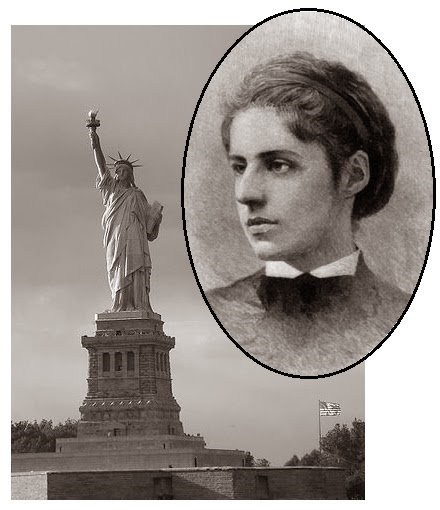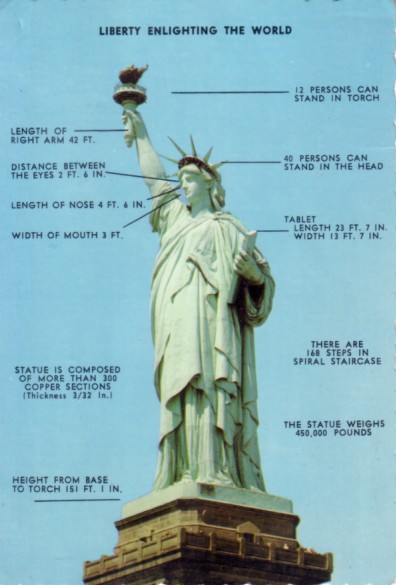
This plaque was added in 1903 on the base, she was not there at the inauguration. "The New Colossus" has been translated to Persian here by Tavaana.Ĭlick here to read Tavaana's exclusive translation of "The New Colossus. This is the poem 'The New Colossus' by Emma Lazarus. The statue had originally been intended to simply symbolize American liberty, but Lazarus' iconic lines "Give me your tired, your poor/Your huddled masses yearning to breathe free" gave the statue a new meaning: a message of welcome to the immigrants sailing past the statue into New York Harbor, and a beacon of hope symbolizing the promise of America. Confronted with destitution and suffering she had never previously encountered, Lazarus was inspired to express her empathy for these refugees through "The New Colussus." In 1903, the poem was engraved on a plaque at the pedestal of the Statue of Liberty. She was the daughter of Esther Lydia Mary (Nathan) and Moses Lazarus. The poem was inscribed on a plaque in a pedestal in the Statue of Liberty in 1903. At the time, Lazarus was participating in aid programs for refugees who had fled anti-Semitic pogroms in eastern Europe. She wrote The New Colossus, in 1883 (Give me your tired, your poor, Your huddled masses yearning to breathe free). With its lone floors where reverent feet once trod.In 1883, as the Statue of Liberty was being built, poet Emma Lazarus (1849-1887) was asked to donate a piece of writing to be auctioned off to fund the statue's construction in New York City.

‘Took voice and mingled in the chant of praise.įor youth and happiness have followed age, Our footsteps have a strange unnatural sound,Īll found their comfort in the holy place,Īnd children’s gladness and men’s gratitude ‘Midst blinding glory and effulgence rare,Īlas! we wake: one scene alone remains, –īut mournful echoes through the empty hall: The slaves of Egypt, – omens, mysteries, –ĭark fleeing hosts by flaming angels led.Ī wondrous light upon a sky-kissed mount, The purple seas, the hot blue sky o’erhead, How as we gaze, in this new world of light,Īgain we see the patriarch with his flocks, Wrung from sad hearts that knew no joy on earth,īy these lone exiles of a thousand years,įrom the fair sunrise land that gave them birth! What prayers were in this temple offered up, The light of the “perpetual lamp” is spent No signs of life are here: the very prayers We stand and gaze around with tearful awe, The ocean’s plunge and roar can enter not, How strange it seems! These Hebrews in their graves,Ĭlose by the street of this fair seaport town,Įmma Lazarus’ “In the Jewish Synagogue at Newport,” published in Lazarus’ 1871 collection “Ademtus and Other Poems” “The Jewish Synagogue at Newport” used the same title format and the same meter as “The Jewish Cemetery at Newport.”įrom Longfellow’s “The Jewish Cemetery at Newport”


Lazarus’ poem was written as a response to Henry Wadsworth Longfellow’s poem “The Jewish Cemetery at Newport.” The last stanza of the Longfellow poem included the phrase “dead nations never rise again.” Lazarus concentrated on the “living power” of the synagogue: “The sacred shrine is holy yet.” Even though Touro was officially closed, it was well maintained and was occasionally used for special occasions. Left and right arrows move across top level links and expand / close menus in sub levels.

Lazarus was familiar with Touro Synagogue because her family spent their summers in Newport along with many others of New York’s cultural elite. The site navigation utilizes arrow, enter, escape, and space bar key commands. When “The Jewish Synagogue at Newport” was composed, Touro Synagogue was not open for worship services because the Jewish population of Newport had dispersed after the Revolutionary War. Very few of us are familiar with Lazarus’ 1867 poem “The Jewish Synagogue at Newport.” Touro Synagogue, built in 1763, is the oldest standing synagogue still in use in the United States. Already a famous poet in 1883, Lazarus was asked to contribute a poem to an auction to raise money for the statue’s Bartholdi Pedestal. Emma LazarusAlmost everyone knows that Emma Lazarus wrote “The New Colossus,” the famous sonnet inscribed on a bronze tablet at the entrance to the Statue of Liberty.


 0 kommentar(er)
0 kommentar(er)
